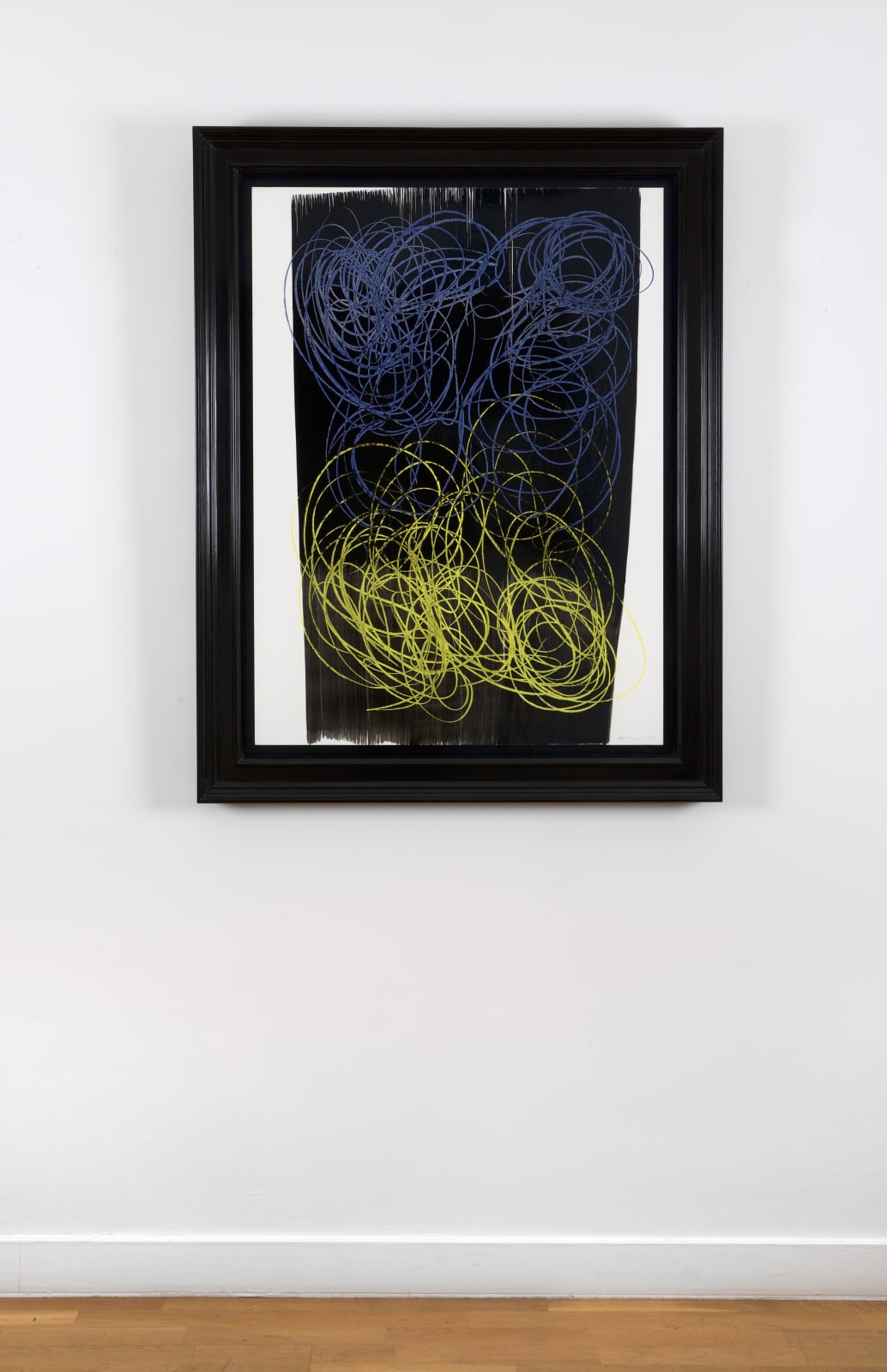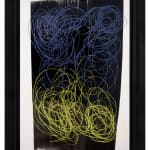

Hans Hartung
“In one of my school notebooks, I captured lightning as soon as it appeared, tracing its zigzag before the thunder broke out. They gave me a sense of the speed of the line, the desire to seize the instant, the urgency of spontaneity.” (Autoportrait, Monique Lefebvre, Grasset, 1976)
A major figure of lyrical abstraction, Hans Hartung was profoundly marked by a wartime injury that transformed his relationship to painting. His work, defined by perpetual renewal, focuses on rapid and incisive gestures. In P 1971 – A59, a black ground is struck with cobalt and yellow marks, where vertical speed and circular arabesques generate magnetic tension and a sense of time.
Executed on baryta cardboard, a smooth material designed for photography, the work highlights both precision and freedom of gesture. P 1971 – A59 stands as one of the most accomplished examples of his abstraction: intense, acrobatic, and timeless, confirming Jacques Villeglé’s description of him as an “acrobat artist.”

